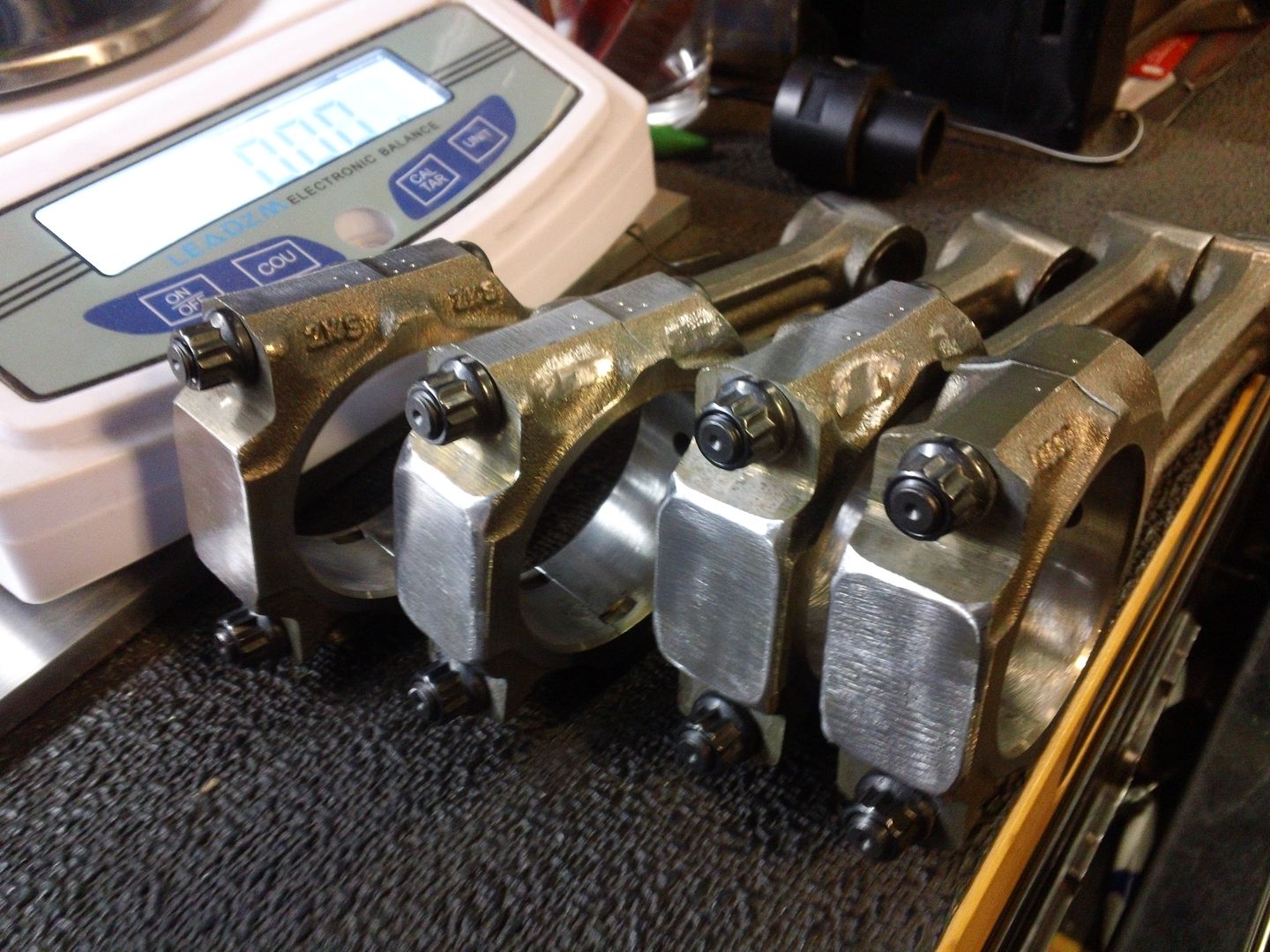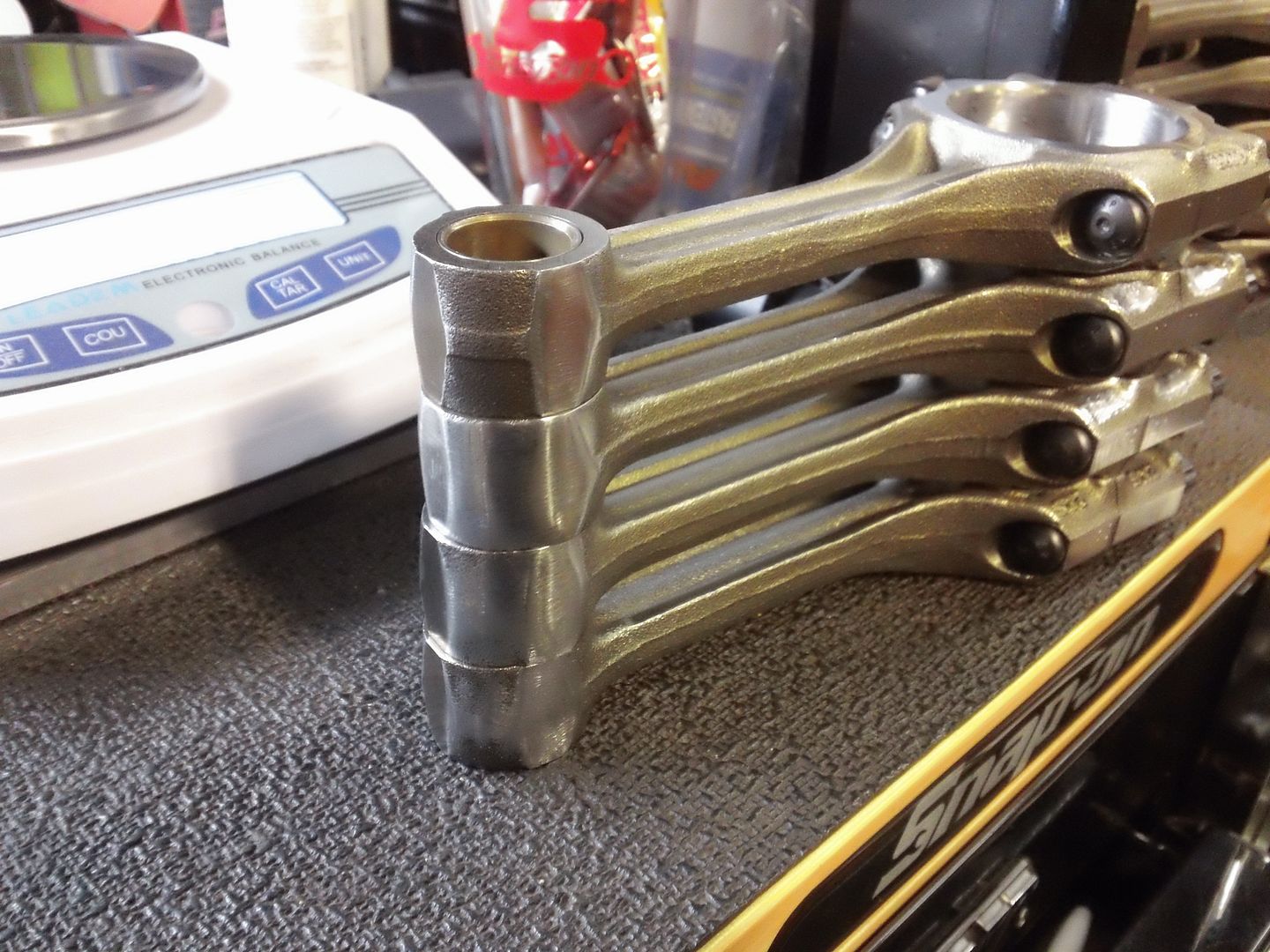Sale ends todayGet 30% off any course (excluding packages)
Ends in --- --- ---
By balancing the rod and altering the shot-peened surface, are there any drawbacks or risks associated with this? Does that increase the potential for stress concentrations?
Lastly, In your LS worked example your tolerance is half a gram. My current weight difference between rods is 3 grams. Is that acceptable or is it absolutely not acceptable?
Application: Ford 5.0 Coyote V8
I'm also interested in the answers to this. Shot peening was revered decades ago, but I haven't heard it mentioned in years.
The rods from my 1987 VW engine were 3 grams difference and look funny now that they're balanced to within .03g of each other. Take a look, Chard:


Nice work Mike, .03g of each other... that must have taken some effort.
My rods are for a late model engine, Ford's 2014 5.0L or 302ci Coyote V8. The rods I bought are actually shot-peened from the manufacturer, Molnar/K1 I believe they are the same manufacture. The biggest weight difference between the lightest and heaviest rod is 2.9g.
I am just curious about disrupting the surface... my hope was to match the heavy small ends with light pistons without disrupting the machined surfaces. However, I am not certain that would be entirely possible.
This is what my rods look like:
What was the claimed tolerance for your rods, Chard, I've read quite a few folks commenting they were quite a bit outside the claims made - K1 I mean, can't comment on the 'Molner' brand?
Shot peening is intended to give a slightly compressed surface state, to reduce fatigue under tensile stress, primarily in the beam area - if I needed to, I'd be looking at the outer edges of the big end, parallel to the bolts, and the side of the small end.
You may, as you say, prefer to consider the small end and piston assembly as a unit, matching the lightest piston to the heaviest small end, etc, removing any material from the piston rather than the small end. there will be a tinyaffect on the dynamics, but negligible when you consider the slight variations in the piston manufacte that may need balancing to even out.
I might add that many years ago, there was a drag car in the UK that set a new record and that used 3 different brands of pistons and 2 of rods (might have been the other way round) as it had been rebuilt out of the parts they had left.
"Shot peening is intended to give a slightly compressed surface state, to reduce fatigue under tensile stress, primarily in the bean area - if I needed to, I'd be looking at the outer edges of the big end, parallel to the bolts, and the side of the small end."
Got it, thank you for this information.
Well, the box label (attached) did not specify what the total range of weights was between rods unless I missed it. However, I did get to speak with someone over at Molnar and if memory serves right it should have been 2+or_ grams between the rods.
My actual measurements are attached for your reference.
What seems alarming to me now, the machinist who balanced my crank did not weigh the rods and pistons for himself, rather he used the labels on the box to determine the bob weights to be used. I now believe this is indeed not the most accurate way to do this.
I appreciate all the responses.
Thats what I'd do, for something I was putting togeter, others may have a different viewpoint - get more suggestions and see what the consensus is - I may be wrong using that method and other's have better methods. I'd triple check them beforehand, too, and remove very small amounts to get the desired result - all to easy to take to much off and end up chasing it, taking more and more material off the components.
Ah, plus or minus gives them up to 4 grammes variation total from lowest to highest.
TBH, I'm rather surprised at what you say your engine balancer did - first thing is normally to equalise the piston assemblies, rods, etc - then balance it as required when they're actually checked - modern stuff is usually pretty good, but one shouldn't take what's written on the box as gospel. No freaking idea how he can think it will be right on the vehicle as he'll have no idea where the piston assemblies and connecting rods will be installed, even if he realised they had that great a tolerance.
